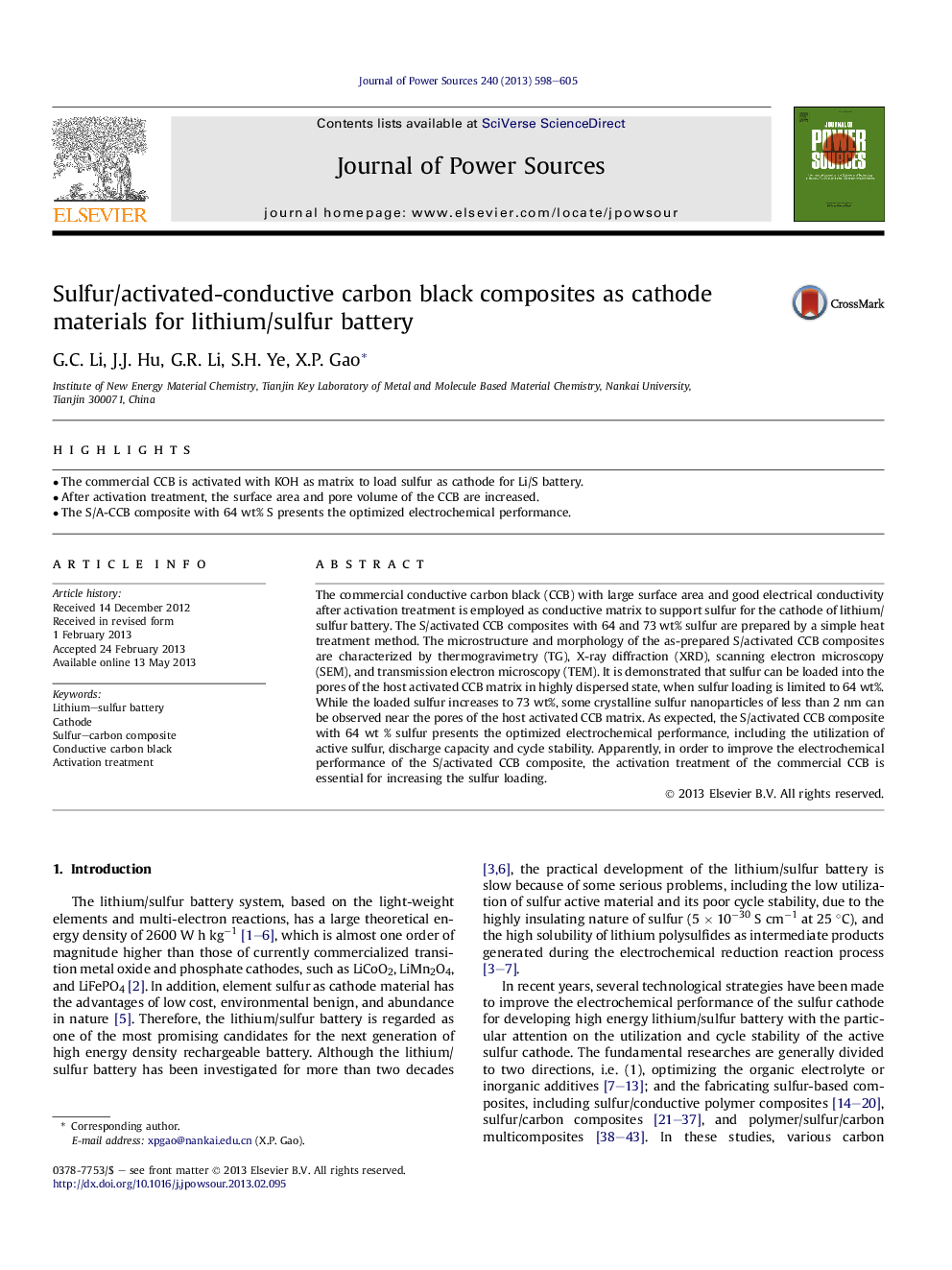| Article ID | Journal | Published Year | Pages | File Type |
|---|---|---|---|---|
| 7740511 | Journal of Power Sources | 2013 | 8 Pages |
Abstract
The commercial conductive carbon black (CCB) with large surface area and good electrical conductivity after activation treatment is employed as conductive matrix to support sulfur for the cathode of lithium/sulfur battery. The S/activated CCB composites with 64 and 73 wt% sulfur are prepared by a simple heat treatment method. The microstructure and morphology of the as-prepared S/activated CCB composites are characterized by thermogravimetry (TG), X-ray diffraction (XRD), scanning electron microscopy (SEM), and transmission electron microscopy (TEM). It is demonstrated that sulfur can be loaded into the pores of the host activated CCB matrix in highly dispersed state, when sulfur loading is limited to 64 wt%. While the loaded sulfur increases to 73 wt%, some crystalline sulfur nanoparticles of less than 2 nm can be observed near the pores of the host activated CCB matrix. As expected, the S/activated CCB composite with 64 wt % sulfur presents the optimized electrochemical performance, including the utilization of active sulfur, discharge capacity and cycle stability. Apparently, in order to improve the electrochemical performance of the S/activated CCB composite, the activation treatment of the commercial CCB is essential for increasing the sulfur loading.
Related Topics
Physical Sciences and Engineering
Chemistry
Electrochemistry
Authors
G.C. Li, J.J. Hu, G.R. Li, S.H. Ye, X.P. Gao,
